A 4-Day Trip to the Engadine Valley, Switzerland
- Stefan
- Aug 22
- 8 min read
Updated: Aug 25
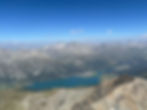
If I had to pick my favourite spot in Switzerland, it would be the Engadine Valley. There’s just something about it: the lakes, the mountains, the light, the quiet. It’s one of Europe’s highest valleys, running about 80 kilometers through Graubünden, and it always feels a little different from the rest of the Alps.
Even in summer, when tourists are around, it never feels too much. You bump into locals, people who’ve been coming here for decades, and it still has that authentic vibe that’s getting harder to find in Switzerland’s more famous regions. And the best part? Many hotels include the Engadine Card, which means buses, trains, and cable cars are free. That card saves you a small fortune if you like heading up the mountains as much as I do.
Why I Keep Coming Back
One reason is the altitude, around 1,800 meters. The air is fresh, the nights are cool even in July, and the light is just unreal. Painters and writers have been obsessed with it for centuries, and I kind of get why.
The second reason is the mix of worlds. You’ve got St. Moritz with its designer shops and five-star hotels, but five minutes away you can be on a trail where it’s just you, a couple of hikers, and cowbells in the distance.
And finally, that Engadine Card. Normally a cable car ride in Switzerland will set you back CHF 30–70. With the card, you just hop on: Piz Nair, Corvatsch, Furtschellas, all included.
Where I Like to Stay
Most of the time, I base myself in Silvaplana. The afternoons are magical (and windy) thanks to the Maloja winds that sweep across the lake, filling it with windsurfers and kitesurfers. It’s fun just to sit and watch.

Silvaplana has gotten quite posh in recent years. Restaurants and hotels are definitely pricier. One place I really enjoyed was Conrad’s Mountain Lodge. The staff there were super friendly, and the place has a special interior and vibe that makes it stand out. The rooms are small but very comfortable, and the whole atmosphere just feels welcoming.
We’ve also stayed at the Albana Hotel. The people there were equally friendly, but when we visited it felt a bit chaotic, almost as if everyone was new at the same time. I really hope they manage to turn this around, because the team itself was genuinely warm and kind.
If you’re looking for something a bit more affordable, I’d suggest Sils Maria or Pontresina. Sils has a great little village center and a lively atmosphere, while Pontresina feels more laid-back and works well as a hiking base. A small detail I’ve noticed: Sils is usually one or two degrees colder than Silvaplana, and as you go east in the valley the temperature generally increases. It doesn’t sound like much, but you really notice it once the sun drops.
Getting Around
You really don’t need a car here. The buses and trains are reliable, and they get you everywhere you’d want to go. Arriving by train is already part of the trip. The Rhaetian Railway from Chur to St. Moritz is one of the most scenic train rides in Europe, with viaducts, tunnels, and mountain views that make you forget the clock.
And once you’re in the valley, the Engadine Card covers most lifts and cable cars, so getting up the mountains is easy and, more importantly, free.
My 4-Day Itinerary
Day 1: Lakeside Walk and BBQ

I always like to start slow. After arriving, I usually walk around Lake Silvaplana or Lake St. Moritz. In the afternoon, the windsurfers show up, and the lake turns into a stage.

For dinner, nothing beats a BBQ at one of the public fire pits around the lakes. Pick up some food at Coop or Migros and you’re set. The grills themselves are already in place, and firewood is usually available at the spot, so you don’t need to bring much with you. The one just across the waterfalls even had a toilette and is right next to the Nietzsche stone.
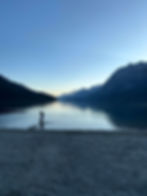
As the wind slows down in the evening, these places can get crowded in summer. But don’t worry, people usually share the grills and the benches. It often turns into a relaxed, social evening with a view that no restaurant can match.
You can also ask at your hotel for a small map of all the firepits in the area, which makes it easy to find a good spot.
Day 2: Horse Carriage into Val Fex

Val Fex is one of my favourite valleys in Switzerland. Many years ago, the locals and the Swiss government agreed that it would never be exploited for mass tourism. That means no ski lifts, no cable cars, and no cars. The only way in is on foot, by bike, or by horse.
We took the horse-drawn omnibus from Sils Maria all the way to Hotel Fex, which sits almost at the end of the valley. From there, we walked back to Sils. It’s an easy walk, perfect for families and older travellers. Even our kids managed it with a scooter.
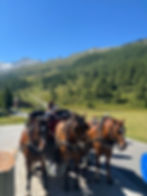
The ride itself is a classic experience. At about CHF 20 one way, the horse carriage into Val Fex is a simple but unforgettable journey. The valley feels quiet and untouched, and the moment you arrive, you understand why it’s so special. Walking back through Sils Maria adds to the charm.
In case you’re worried about animal welfare, it’s worth knowing that Switzerland has some of the strictest animal protection laws in the world. The horses get regular breaks, and depending on how many people are riding, they’ll often add extra horses to the carriage to make the journey easier for them. The village has plenty of history and atmosphere — Nietzsche even spent his summers here.
And if you still have energy left, take the cable car up to Furtschellas for some of the best lake views in the Upper Engadine. There’s a small shuttle bus running from Sils town to the cable car station, or you can just walk over, which takes about 10 to 15 minutes.

We ended the day with dinner at Mulet’s Pizzeria in Silvaplana. The staff were friendly, and they serve some creative takes on pizza that made for a relaxed, fun evening.
Day 3: St. Moritz and Piz Nair
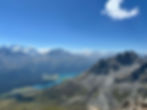
This day is all about heading up into the mountains above St. Moritz. Start at the Schulhausplatz funicular, ride up to Corviglia, and then keep going to Piz Nair (3,057 m). The view from the top is spectacular: lakes glittering below, glaciers hanging in the distance, and on a clear day you can see across the border into Italy.
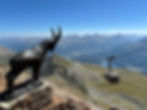
From Piz Nair you can either hike down or take the cable car back to Corviglia. From there, you have the option of a very family-friendly hike to Marguns, or simply take the ski lift across. At Marguns you can ride the cable car down to Celerina and catch the bus or train back. It’s a scenic loop that works for all ages without too much effort.
Back down in Celerina, we decided to go up to Muottas Muragl. It’s not the highest mountain in the area, but it probably has the very best view into the Engadine Valley. From up there, you can see the famous chain of lakes stretching all the way from St. Moritz to Silvaplana, one of the most iconic panoramas in the region.
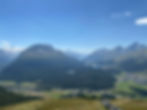
As a summary, this day we took the bus to St. Moritz Schulhausplatz, then the mountain rail up to Corviglia. From there we continued by cable car to Piz Nair, before heading back down to Corviglia. Next we took the ski lift across to Marguns, followed by the gondola down to Celerina. From Celerina we caught the bus to Muottas Muragl, where the mountain rail brought us up to one of the most breathtaking viewpoints in the Engadine. We then took the bus back from Muottas Muragl to Silvaplana, where we ended the day with another relaxed BBQ dinner by the lake.
Day 4: Piz Corvatsch and Whisky Tasting

Save the best for last: Piz Corvatsch. From Surlej, take the cable car up to 3,303 meters. The vibe up here is completely different from Piz Nair — wilder, rougher, and with glaciers practically at your feet. It feels like stepping into another world.
On the way, make a stop at the Orma Whisky Distillery, officially the highest in the world. Even if whisky isn’t really your thing, it’s worth it. The story behind it is fun, the setting is unique, and it’s the kind of place you’ll be glad you visited.

Getting there is easy. There’s a free shuttle bus connecting Silvaplana and Surlej with the cable car station. If you’re driving, you can park directly at the cable car station (paid), or a little further down in the village where parking is free during the summer.

If you’re not in a hurry to head home, you can also stop at the middle station on the way down and hike the famous 5 Lakes Trail, one of the most beautiful family-friendly hikes in the Engadine. The trail connects several turquoise mountain lakes and is a perfect way to round off your trip.
Practical Tips
Best Time to Visit: Summer (June–September) for hiking and lakes, winter (December–March) for skiing. In spring and autumn, it’s quieter, but a lot of lifts shut down for maintenance.
Getting There: From Zurich, take the train via Chur to St. Moritz (about 3h 20min). By car, it’s a 3-hour drive over the Julier Pass.
Costs: St. Moritz hotels can run CHF 300+ per night. In Sils or Pontresina, you’ll find decent places starting at CHF 150–200. Meals range from CHF 20–40 for casual dining, with no upper limit if you go fancy.
Weather: Daytime highs in summer hover around 18–22°C, but evenings drop quickly. Bring layers.
Local Hack: The public fire pits by the lakes are brilliant. Bring some sausages, grill them with a view, and you’ll feel more local than any restaurant can make you.
Why Engadine Switzerland Stands Out
The Engadine Valley in Switzerland is a place I keep coming back to. Every trip feels a little different. Sometimes it’s the thrill of the Maloja winds, sometimes it’s standing on top of Piz Nair, sometimes it’s just walking in silence through Val Fex.
And while St. Moritz will always be the flashy name, it’s the mix of glitz and quiet that makes the Engadine special. For me, it’s the one place in Switzerland that still feels both authentic and extraordinary at the same time.
Already explored the Engadine? Then spend a weekend in the beautiful resort town of Arosa, where alpine charm meets relaxation.














